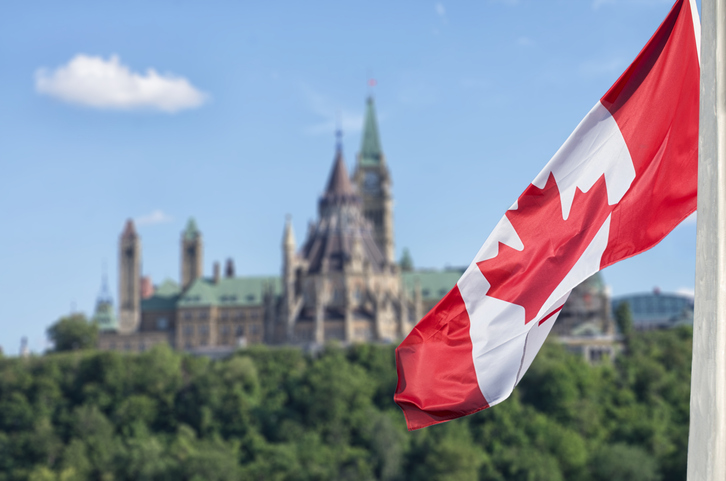It may be hard to believe that four years have passed (especially considering the two-plus years lost to the pandemic!) but October 17 marks the 4th anniversary of Canada legalizing adult-use recreational cannabis cannabis in Canada. With that in mind, we wanted to investigate how the landscape of legal cannabis in the country has changed during that time—things actually look pretty different from the parameters outlined at the outset. Here’s a look at some of the developments that have occurred since the Cannabis Act first passed back in 2018.
1. Retail! Retail! Retail!
Four years on, the explosion of cannabis retail establishments from coast to coast is a notable development. It is estimated that Canada will be home to approximately 3,500 licensed stores by the end of 2022. The growth of the retail landscape will offer expanded access to legal product, which will hopefully put increased pressure on the illicit market. At the same time, further competition and lower prices will likely stress the bottom line of retail operators who are currently continuing to post net losses despite some operators reporting an increase in revenues. As the retail footprint moves more and more towards market saturation, it will be interesting to see which players are able to stand out and capture customer loyalty and repeat business.
2. Illicit Market Share
While no one thought it would happen overnight, one of the stated goals of regulating cannabis was to have an impact on the illicit market. There is still much work to be done—as well as an on-going debate about the ultimate feasibility of the legal market displacing the illegal market— but there are some signs that tides are (slowly) turning. Data from a variety of sources (including self-reported data from cannabis users) shows that the use of the illicit cannabis market is decreasing. While operators in the illicit space continue to offer both lower-priced and higher potency products to customers, the hope is that the expansion of the retail market, lower prices in the legal space and an expanding product base will continue dissuade customers from engaging with illicit businesses.
3. New Products Introduced Since Legalization
When adult-use recreational cannabis was first regulated, flower and some oils were all that was available. Now that extracts, edibles, tinctures and infused beverages have all been introduced, there are more cannabis consumption methods from which to choose. While dried flower continues to dominate the market, edible cannabis has seen a rapid increase. Despite this, the potency limit for edibles remains an issue. At a standard maximum of 10mg of THC per legal package, there is greater availability of higher potency edibles in the illicit market; this limit goes against the goal of taking customers away from the illicit market, as people will seek out higher-dose edibles where they can get them.
4. The Excise Tax Debate
Licensed producers must pay a federal excise duty when packaged cannabis products are delivered to a purchaser. In Canada, excise taxes (also known as “sin taxes”) are also paid by producers, who have to remit either $1 per gram or 10 percent of the sale price on dried cannabis—whichever is higher. For edible cannabis, cannabis extracts and cannabis topicals, the duty is also impacted by the amount of THC in the product.
As price compression continues, the excise tax remains at the same level, which means that the bottom line of producers is being significantly impacted. Smaller producers, which reflect the majority of the cultivators, processors and sellers, continue to be affected the most. Some are calling this a financial state of emergency in the sector, with many businesses facing threats to their existence. Medical patients are also caught in the crosshairs, as they are forced to pay a tax not imposed on any other kinds of medicine—particularly if they require higher potency products to address their medical needs.
5. The Cannabis Act Review Delayed
When the federal government legalized adult-use recreational cannabis in October 2018, it included a commitment to review the Act within three years. Four years later, the review is just now getting underway. Themes being considered by the government include the impact on young persons, the impact on the illicit market and the impact on Indigenous peoples, to name a few.
The above-noted themes have been a disappointment to some in the industry, who had hoped that the review would also address issues like excise taxes, edible potency limits, government fees, and marketing and advertising restrictions. It will be interesting to see if the industry is able to push for these issues to be added to the conversation.
6. Pardons, Bill C-5 and the Pursuit of Full Expungement
One of the criticisms faced by the government since the legalization of adult-use recreational cannabis is the number of people who are caught up in the criminal justice system under mandatory minimum sentences and/or for simple possession. This group includes a disproportionate number of people from Black and Indigenous communities.
There was an attempt to address this in 2019, when it was announced that those with simple possession charges could apply for expedited pardons and record suspensions. While this sounded encouraging, there have been less than 1000 pardons granted so far—despite more than 250,000 Canadians having convictions for cannabis possession.
More recently, Bill C-5, which has cleared the House of Commons and will be debated in the Senate this fall, would remove mandatory minimum sentences for some drug offences, and would automatically sequester records for simple possession two years after passage of the bill. While this is a step in the right direction, it should be understood that, without the full expungement of records, those convicted of simple possession would still show up on American databases.
While the Canadian cannabis industry has certainly seen its share of ups and downs over the last few years, there is no question progress has also been made towards many of the ideals set forth when cannabis was first regulated four years ago. As we continue to see the industry evolve, we can expect to see more opportunities for Canadians to consume cannabis and for cannabis use to increasingly be seen as a part of mainstream living.






